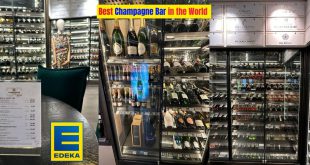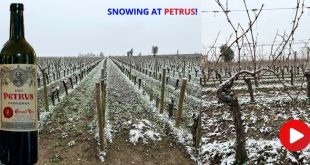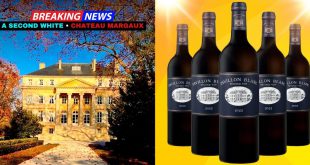 The Abrigo Family. From left, Paola & Giorgio with their children Giulio, Angelica and Sergio
The Abrigo Family. From left, Paola & Giorgio with their children Giulio, Angelica and Sergio
Barolo and Barbaresco are two of Italy’s greatest reds.
Produced entirely from Nebbiolo, such is the whirlwind worldwide demand, some of the wines are now sold as futures or en primeurs like top Bordeaux.
While not suggesting Dolcetto approaches the greatness of Nebbiolo, in the mind and hands of a conscientious, competent, sensitive, far-sighted, committed producer, Dolcetto d’Alba can make a wine lover sit up and wonder why we have not accorded more regard to this other Piedmontese variety.
So it was on 30 March 2021, with four other tasters including Italian wine expert CHAN Wai Xin – winexin.sg/author/chanwxin/ – we were bowled over by the wines of Abrigo Giovanni.
“I make the wine the same way my grandfather had made it,” a thoughtful, reflective 26-year young Sergio Abrigo informed during the Zoom tasting.
Together with elder brother Giulio, they make wine for the family estate named after their grandfather Giovanni Abrigo. The siblings had graduated from the Umberto Oenological School of Alba in 2015 and 2013 respectively. And work together with their parents.
Papa Giorgio Abrigo was trained in agronomy and, apart from vines, had planted hazelnut groves for which the region is just as famous for. Mama Paola is active in promoting the wines commercially.
Azienda Agricola Abrigo Giovanni was established in 1968.
Its namesake had moved to Diano (just 50 km south-east of Turin) from nearby Treiso. The late 1960s saw a mass exodus from the countryside to more populated towns, cities and factories in Italy.
 Azienda Agricola Abrigo Giovanni is in Diano and produces of the very best Dolcetto in the whole of Italy
Azienda Agricola Abrigo Giovanni is in Diano and produces of the very best Dolcetto in the whole of Italy
Giovanni and wife Maria raised Piedmontese cattle for beef, other small farmyard animals, and raise cereal crops, orchards, hazelnut trees and vineyards. Such is the fame of the hazelnut it has its own protected appellation.
Giovanni Abrigo cultivates the famous “Tonda”, a top quality hazelnut which finds its way into the famous Alba nougat. The hazelnut orchards extend over 10 hectares and produce about 25,000 tons of hazelnuts every year.
As for wine, there are 11 hectares of vineyards. Together with fruit they buy and other vineyards they rent, annual production of Giovanni Abrigo is about 60,000 bottles.
The family’s outlook is reassuring.
“A great wine is made in the vineyard. Wine is a living thing, just like the eco-system which is its source. The magic of the perfect and spontaneous balance between climate, precipitation, temperature, and the characteristics of the specific site with its own bio-diversity produce a unique alchemy, which cannot be reproduced anywhere else”.
The vineyards have a cover crop comprising spontaneous herbs and grass between the rows. The winery has a system to recover waste water in the cellar. The use of sulphur is only a third of the industry norm.
The family’s most treasured vineyard remains Garabei, producing their top Dolcetto of the same name.
When Giovanni Abrigo bought the land, Garabei already existed. Planted on a steep hill 350 metres above sea level with a south-westerly exposure, the more than 70-year old vines are grown in shallow dry calcareous soil – over sand and grey sandstone – which favours the early-ripening Docetto. What adds to Garabei’s complexity is the diversity of clones and rootstocks planted.

Abrigo Giovanni Dolcetto di Diano d’Alba Superiore Garabei DOCG 2019
Hand-harvested, the grapes are de-stemmed and vinified in temperature-controlled stainless-steel tanks. Depending on the vintage, maceration is 9 to 12 days. Malolactic fermentation takes place in concrete tanks. The wine is bottled about a year following the harvest and rests for another six months before commercial release. All the richness of colour, fruit and tannins come from the goodness of the grape. No oak is involved in Garabei. The fragrant, floral, dark cherry fruit is stubbornly intense and persistent. Generosity of fruit is matched by equally rich, holistic tannins from the grape. Incredible Dolcetto!

Abrigo Giovanni Barbera d’Alba Superiore Rocche dei Trisu 2018
Hand-harvested from vineyards in Diano and nearby villages, the fruit is destemmed and the maceration and alcoholic fermentation – depending on the vintage – 9 to 10 days – in stainless-steel tanks. The wine is then aged in 3,000- and 4,000-litre seasoned French and Slovenia oak casks for about 6 months. There is a small proportion of 500-litre French oak barrels used but no more than 10% is new. Smokier with dense, sweet, deep blue/purple fruit and lots of freshness.
Abrigo Giovanni Barolo “Ravera” 2017
When elder brother Giulio graduated from the Umberto Oenological School of Alba in 2013, the Abrigo Family decided to make a Barolo. They found a single vineyard named “Ravera” about 15 km from their winery in Novello. One parcel of the vineyard is 40 years old, and another 15 years. The soil is rich in clay, sandstone, limestone and the rented vineyard is 400 metres above sea level. The grapes are ferried to the winery during harvest. As they also make a Nebbiolo d’Alba, they are familiar working with the variety. Alcoholic fermentation is 15 days and, depending on the quality of the vintage, post-fermentation maceration can be anywhere from 20 to 40 days. In 2017 – regarded as a difficult vintage – it was the former to avoid harsh tannins from the pips. The richer 2015 and 2016 vintages were 40 days. The wine is aged 20 months in 10-year old 10-hectolitre casks. Scented, including red cherries. Very fresh but also quite closed. A light vintage for Barolo.



